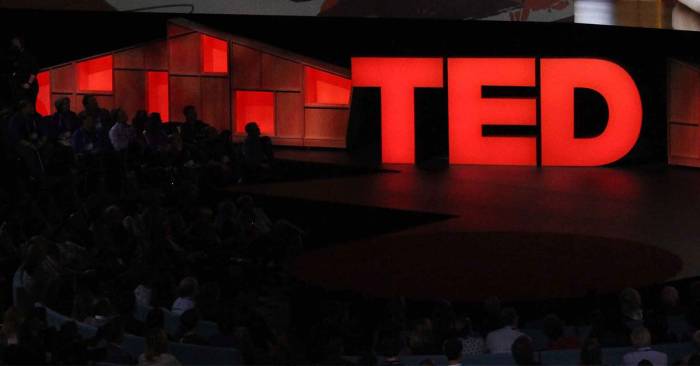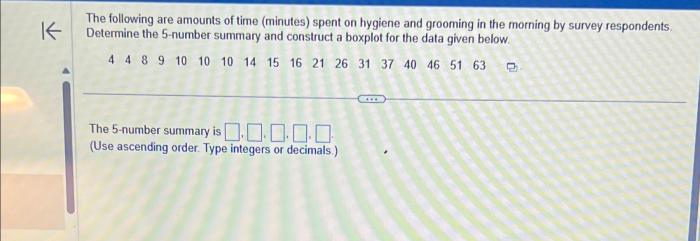Why are meetings unproductive? This question plagues many organizations, leading to wasted time and frustrated employees. This post explores the multifaceted reasons behind unproductive meetings, from poor planning and preparation to ineffective formats and technology issues. We’ll examine common pitfalls and offer practical solutions to transform your meetings from time-wasters into productive collaborations.
Meetings are supposed to be vital tools for collaboration and progress, yet they often fall short. This analysis will uncover the reasons behind this common frustration and provide actionable strategies to improve meeting outcomes. We’ll cover everything from crafting effective agendas to ensuring clear follow-up, with a focus on transforming your meetings from unproductive gatherings to productive problem-solving sessions.
Poor Planning and Preparation
Meetings are a cornerstone of modern work, yet they often fall short of their potential. A significant contributing factor to unproductive meetings is inadequate planning and preparation. Without careful consideration of objectives, participants, and logistics, meetings can quickly devolve into time-wasting exercises. Effective planning is crucial to ensuring meetings are productive and valuable.
Common Meeting Planning Mistakes
Poorly defined objectives, lack of clear agendas, and inappropriate participant selection are common pitfalls that lead to unproductive meetings. Meetings without a clear purpose often meander aimlessly, wasting valuable time and resources. In addition, an ill-defined agenda can lead to tangential discussions and a failure to achieve desired outcomes. Finally, including the wrong people in a meeting dilutes the discussion and reduces its effectiveness.
- Unclear Objectives: Meetings lacking specific objectives often wander into unproductive discussions, leading to wasted time and energy. For example, a meeting called to “brainstorm ideas” without a particular product or problem in mind may yield superficial and unfocused suggestions. Clearly defined objectives provide direction and focus for the discussion.
- Vague Agendas: A meeting agenda lacking specific topics and time allocations can lead to a lack of structure and focus. This can result in important points being overlooked or discussed insufficiently, and the meeting losing its intended purpose.
- Inadequate Participant Selection: Inviting unnecessary participants to a meeting can dilute the discussion and waste everyone’s time. For instance, a meeting about marketing strategies for a specific product should not include people from the accounting department unless their input is absolutely critical. Effective meetings involve only the essential participants.
- Insufficient Preparation: Participants who haven’t prepared adequately for a meeting can lead to unproductive discussion. Without researching relevant data or reviewing prior documents, they may struggle to contribute meaningfully.
- Lack of Follow-up Actions: Meetings without clearly defined follow-up actions or assigned responsibilities can lead to a lack of accountability and lost momentum. Without clear next steps, the meeting’s value is diminished.
Effective Meeting Agendas
A well-structured agenda is essential for a productive meeting. Effective agendas provide a clear roadmap for the discussion, keeping the meeting focused and efficient. They differ significantly from ineffective agendas that lack structure and direction. The key differentiator is a clear Artikel of the topics to be discussed, along with allotted time for each topic.
- Effective Agenda Example: A well-structured agenda includes a clear title, a list of attendees, the meeting’s objectives, a detailed Artikel of topics with time allocated for each, and a summary of action items and deadlines. This structure keeps the meeting focused on the predefined goals.
- Ineffective Agenda Example: An agenda lacking specific topics, time allocations, or action items leads to a disorganized and inefficient meeting. This unstructured approach can lead to discussions straying from the intended purpose and resulting in wasted time.
Setting Clear Objectives and Desired Outcomes
Clearly defining the objectives and desired outcomes for a meeting is critical to ensuring its effectiveness. Defining objectives ensures the discussion remains focused on the core issues. This also clarifies the expectations for the meeting and enables participants to prepare accordingly.
- Defining Objectives: Examples of clear objectives include “Develop a marketing strategy for Q4” or “Finalize the budget for the new project.” These specific objectives guide the discussion and ensure the meeting stays on track.
- Identifying Desired Outcomes: Desired outcomes translate objectives into tangible results. For instance, a desired outcome for a marketing strategy meeting could be a detailed, actionable marketing plan, ready for implementation.
Identifying the Right Participants
Identifying the right participants for a meeting is crucial to its success. Including the wrong people can lead to unnecessary distractions and diluted discussions. The focus should be on individuals who can contribute meaningfully to the meeting’s objectives. Only those with relevant expertise or vested interest should be included.
Effective vs. Ineffective Meeting Invitations
| Feature | Effective Meeting Invitation | Ineffective Meeting Invitation |
|---|---|---|
| Purpose | Clearly states the meeting’s objective and desired outcome. | Vague or absent purpose statement. |
| Agenda | Includes a concise agenda outlining topics and estimated time. | No agenda or a very general one. |
| Participants | Specifies who should attend based on relevance to the meeting’s purpose. | Includes irrelevant participants. |
| Date & Time | Provides specific date and time. | Ambiguous date and time. |
| Location | Specifies the meeting location. | Does not specify the meeting location. |
Lack of Structure and Time Management

Meetings often flounder due to a lack of clear direction and effective time management. Without a structured agenda, discussions can wander, important topics get overlooked, and valuable time is wasted. This unstructured approach not only diminishes productivity but also erodes the trust and respect participants have for the meeting process. A well-defined structure, combined with effective time management techniques, can significantly improve meeting outcomes.Poorly structured meetings are characterized by a lack of focus and a tendency to veer off track.
This often results in important issues being neglected, decisions not being made, and overall meeting effectiveness diminishing. Timeboxing, a crucial time management technique, provides a framework for meeting efficiency, helping teams stay on track and achieve their objectives.
Defining a Clear Structure
A well-defined agenda is essential for keeping a meeting on track. It should Artikel the objectives, topics to be discussed, and allotted time for each item. A clear structure ensures everyone understands the meeting’s purpose and expectations, promoting focused discussion. Without a structured agenda, meetings often devolve into aimless chatter, wasting everyone’s time and potentially leading to missed deadlines.
A well-structured meeting ensures that all relevant topics are addressed and that decisions are made effectively.
Meetings are often a wasteland of wasted time. People zone out, agendas get lost, and crucial decisions get buried under a mountain of unnecessary chatter. It’s like trying to find a needle in a haystack – especially when you consider that the number one reason you’re still single might be the same lack of focus and efficiency that plagues unproductive meetings.
the number one reason youre still single It’s all about poor communication and a failure to prioritize. Ultimately, unproductive meetings are a recipe for disaster, both in the office and in your personal life.
Implementing Timeboxing
Timeboxing is a crucial technique for optimizing meeting efficiency. Allocating specific time slots for different agenda items ensures that each topic receives adequate attention without exceeding allocated time. This practice promotes accountability and helps teams stay on schedule. By clearly defining the timeframe for each discussion point, teams can stay focused and avoid unnecessary delays. For example, allocating 15 minutes for introductions, 30 minutes for problem discussion, and 15 minutes for action items ensures a focused meeting.
Keeping Meetings on Track
Techniques to keep meetings on track and avoid going off-topic include assigning a facilitator, using visual aids to maintain focus, and establishing clear ground rules. The facilitator can guide the discussion, ensuring everyone stays on topic and that important points are not overlooked. Visual aids can help maintain focus and track progress. Establishing ground rules, such as encouraging concise contributions and setting time limits for speaking, can also help keep the discussion on track.
For instance, a facilitator can steer the discussion back to the agenda if it deviates from the planned path.
Managing Discussion Time and Preventing Delays
Effective meeting time management requires techniques to prevent delays. Encouraging concise contributions, using a structured method of recording points, and using a timer for each topic can help manage discussion time and avoid delays. Using a timer for each topic ensures that everyone is mindful of the time constraints. Taking detailed notes or using a shared document to record key points can also aid in preventing delays.
For instance, a dedicated note-taker can record key discussion points and decisions, ensuring nothing gets lost.
Meetings can be a total waste of time, right? Often, they lack clear objectives and end up with everyone just going through the motions. This is where asking the right questions during a job interview comes in handy. For example, probing into the company’s meeting culture – how often do they meet, and what’s the purpose of those meetings?
– can give you a glimpse into how productive the work environment might be. Asking these insightful questions, like those detailed in this helpful guide on why you should ask these questions during job interviews , can ultimately help you avoid joining a team where meetings are a revolving door of wasted time and effort. This is crucial because, if the interview process shows a company struggles with efficient meetings, you can expect the same issues in your future role.
Time Management Strategies for Meetings
| Strategy | Description | Example |
|---|---|---|
| Timeboxing | Allocating specific time slots for each agenda item. | 10 minutes for updates, 20 minutes for brainstorming, 15 minutes for action items. |
| Facilitated Discussions | Appointing a facilitator to guide the discussion and keep it on track. | The project lead facilitates the meeting, ensuring all team members contribute and the discussion stays focused. |
| Concise Contributions | Encouraging participants to be brief and to the point in their contributions. | Setting a 2-minute speaking limit per person for each topic. |
| Visual Aids | Using visuals, such as presentations or charts, to support discussions and maintain focus. | Using a slide deck to present project updates, and highlight key points. |
Poor Communication and Engagement
Meetings often fall flat because of ineffective communication and a lack of engagement. A lack of clarity, active listening, and respectful dialogue can derail the entire purpose of a gathering. This often leads to wasted time, frustration, and ultimately, no meaningful progress. Improving communication and fostering engagement is key to unlocking the productivity potential of any meeting.Poor communication, whether intentional or unintentional, creates significant barriers to productive meetings.
This can manifest in various ways, from a lack of clarity in instructions to a failure to acknowledge diverse viewpoints. Understanding these barriers and actively working to overcome them is crucial for successful outcomes.
Common Communication Barriers in Meetings
Effective communication is the bedrock of productive meetings. Barriers can arise from several sources. Misunderstandings, arising from ambiguous language or differing interpretations, often plague meetings. Lack of clarity in the agenda and objectives can leave participants confused and disengaged. Poorly defined roles and responsibilities can lead to conflicting expectations and a lack of shared understanding.
Additionally, a lack of active listening can hinder the exchange of ideas and create a hostile environment.
Encouraging Active Participation
Encouraging active participation in meetings is vital to their success. This involves creating a safe and supportive environment where individuals feel comfortable sharing their ideas and perspectives. Strategies include:
- Establishing clear ground rules: Ground rules should be established at the start of each meeting to set expectations for respectful communication, active listening, and constructive feedback. These rules should be reviewed regularly to ensure they are still relevant.
- Using diverse communication techniques: Encourage participation by employing various methods such as brainstorming sessions, small group discussions, or anonymous feedback mechanisms. These approaches can help ensure that diverse voices are heard and that everyone feels comfortable contributing.
- Promoting active listening: Emphasize the importance of active listening by encouraging participants to paraphrase and summarize each other’s comments. This helps ensure that everyone understands each other and reduces the likelihood of misinterpretations.
- Encouraging questions and feedback: Create a culture of open dialogue by actively encouraging participants to ask questions and provide feedback. This can be achieved by allocating specific time for Q&A sessions or creating designated channels for feedback.
Fostering a Collaborative and Respectful Atmosphere
A collaborative and respectful atmosphere is essential for productive meetings. This atmosphere fosters trust and allows for open dialogue.
Meetings can often feel like a waste of time, filled with unnecessary chatter and unproductive discussions. Sometimes, it’s just about getting things done. For a dose of motivation to help you tackle those tedious meetings, check out these inspiring quotes from highly successful people that will motivate and inspire you: quotes highly successful people that will motivate and inspire you.
Ultimately, effective meetings require clear agendas, focused discussion, and actionable outcomes, not just endless chatter.
- Valuing diverse perspectives: Encourage participants to share their unique viewpoints and experiences. Recognize that diverse perspectives bring valuable insights and can lead to innovative solutions.
- Managing conflict constructively: Conflict is inevitable in any group setting. However, it can be managed constructively by establishing clear procedures for addressing disagreements and finding common ground. Focus on the issue, not the person.
- Recognizing and acknowledging contributions: Acknowledge and appreciate the contributions of all participants. This can be achieved through verbal praise, written notes, or other forms of recognition. This fosters a positive environment where everyone feels valued.
- Using inclusive language: Using inclusive language that respects and values the diversity of the group is vital. Be mindful of gender, race, and other factors when selecting words and phrases. This will ensure that everyone feels included and respected.
Effective vs. Ineffective Communication Styles in Meetings
Effective communication styles in meetings facilitate collaboration and understanding, while ineffective styles lead to misunderstandings and unproductive outcomes.
| Effective Communication Style | Ineffective Communication Style |
|---|---|
| Active listening, asking clarifying questions, summarizing key points | Interrupting others, dominating conversations, failing to listen to different viewpoints |
| Using clear and concise language, avoiding jargon | Using vague or ambiguous language, relying heavily on jargon, and assuming prior knowledge |
| Encouraging participation from all members, creating a safe space | Ignoring certain members, creating an intimidating atmosphere, and making assumptions about contributions |
Creating an Environment Where Diverse Perspectives Are Valued
Creating an environment where diverse perspectives are valued is crucial for unlocking the full potential of any meeting. This involves recognizing the unique contributions that each participant brings to the table.
- Active listening and respectful dialogue: Actively listen to and value diverse viewpoints, even if they differ from your own. Foster respectful dialogue and avoid interrupting or dismissing differing opinions.
- Creating a safe space for sharing ideas: Create an environment where individuals feel comfortable expressing their thoughts and ideas without fear of judgment or criticism. This can be achieved by encouraging open-mindedness and setting clear ground rules for respectful discussion.
- Recognizing and celebrating diverse contributions: Acknowledge and appreciate the contributions of all participants, regardless of their background or perspective. This will encourage everyone to feel valued and respected.
Unclear Roles and Responsibilities
Meetings are meant to be collaborative efforts, but when roles and responsibilities are fuzzy, they quickly become unproductive. Participants might feel unsure about their contribution, leading to wasted time and missed opportunities. Unclear roles can also create conflicts and resentment, ultimately hindering the group’s progress. This often happens when individuals aren’t explicitly assigned tasks, or when the expectations for each role aren’t well-defined.Unclear roles and responsibilities in meetings lead to a significant loss of efficiency.
Individuals might duplicate efforts, misunderstand their contributions, or even avoid participation altogether. This lack of clarity directly impacts the meeting’s overall effectiveness and the ability to achieve its objectives. Defining these roles and responsibilities upfront prevents these issues and sets the stage for a productive and focused discussion.
Assigning Clear Tasks and Responsibilities
Defining clear roles is crucial for effective meetings. It ensures that every participant understands their specific contribution and how it fits into the overall goal. This clarity prevents duplicated efforts, promotes focused participation, and fosters a collaborative atmosphere.
- Establish clear objectives: Before the meeting, define the specific outcomes or goals you want to achieve. These objectives should be unambiguous and measurable.
- Identify key tasks: Break down the objectives into smaller, manageable tasks. This will give everyone a clearer picture of what needs to be done.
- Assign roles and responsibilities: Match the identified tasks with specific individuals or teams. Clearly articulate the responsibilities for each role. Ensure each person knows their part in achieving the desired outcomes.
- Use a meeting agenda: A well-structured agenda with assigned tasks for each participant helps keep everyone focused and accountable.
Establishing Accountability for Decisions
Accountability is essential for ensuring decisions made during meetings are implemented effectively. A clear system for follow-up ensures that agreed-upon actions are carried out and progress is tracked.
- Establish clear deadlines: Assign deadlines for each task or action item. This helps keep everyone on track and ensures that the agreed-upon actions are completed in a timely manner.
- Follow-up mechanisms: Implement a system for tracking progress and ensuring that action items are addressed. This could involve regular check-ins, email reminders, or dedicated project management tools.
- Designated follow-up person: Appoint someone to be responsible for overseeing the implementation of decisions and actions agreed upon in the meeting.
- Regular reporting: Establish a system for reporting on the status of action items. This allows for timely identification of potential roadblocks and allows for course correction.
Defining Individual Roles in a Meeting Context
Different individuals may play various roles during a meeting. Understanding these roles enhances participation and effectiveness. This understanding helps ensure each participant contributes their unique skills and expertise.
- Facilitator: Guides the meeting, ensures everyone has a chance to speak, and keeps the discussion on track.
- Note-taker: Records key decisions, action items, and discussion points.
- Reporter: Summarizes the meeting’s outcomes and action items for follow-up.
- Decision-maker: Has the authority to make final decisions on specific issues.
- Resource person: Provides specialized knowledge or expertise relevant to the discussion.
Meeting Role Allocation Table
The following table demonstrates how to assign roles, responsibilities, and tasks in a meeting context.
| Role | Responsibilities | Tasks |
|---|---|---|
| Facilitator | Keeps the meeting on track, manages time, ensures all voices are heard | Manage the agenda, monitor time, encourage participation |
| Note-taker | Records key decisions, action items, and discussion points | Document decisions, record action items, summarize key points |
| Decision-maker | Makes final decisions on specific issues | Vote on options, finalize decisions, make final calls |
| Resource person | Provides specialized knowledge or expertise | Answer questions, offer insights, share relevant data |
Lack of Follow-up and Action Items

Meetings are meant to be catalysts for progress, but without proper follow-through, they often become unproductive exercises. A critical component of effective meetings is the establishment and execution of action items, which translate decisions into tangible results. Often, valuable insights and strategies discussed are lost in the shuffle when follow-up is neglected. This lack of follow-up significantly impacts team performance and project outcomes.A common pitfall in many meetings is the assumption that action items will be automatically addressed.
This passive approach often leads to missed deadlines, unclear responsibilities, and ultimately, a lack of progress. Implementing a structured approach to action item management is key to ensuring meetings yield tangible results.
Documenting and Assigning Action Items
Effective meetings require a clear record of decisions and assigned tasks. Documenting action items ensures everyone understands their responsibilities and the expected timeline for completion. This documented record serves as a vital reference point for both individual contributors and project managers. The documented action items can be revisited, tracked, and updated as needed.
Strategies for Ensuring Follow-up
A proactive approach is needed to guarantee that action items are not forgotten. Regular communication is essential, ensuring that team members are aware of their assigned tasks and deadlines. Regular check-ins and progress updates, scheduled or impromptu, can provide necessary support and clarity. Using project management tools or a shared document (e.g., a spreadsheet or shared online document) facilitates visibility and promotes transparency.
Tracking Progress and Measuring Outcomes, Why are meetings unproductive
Establishing clear metrics for measuring the success of action items is crucial. This can involve defining specific, measurable, achievable, relevant, and time-bound (SMART) goals for each action item. For instance, if an action item involves creating a presentation, the progress can be tracked by milestones such as outlining the content, creating slides, and delivering a draft. Regular progress reports help identify potential roadblocks early on and enable prompt adjustments.
Communicating Next Steps Effectively
Clear and concise communication about next steps is essential to avoid confusion and ensure everyone is on the same page. Clearly stating the action item, the deadline, and the responsible party in the meeting itself minimizes ambiguity. A follow-up email or instant message summarizing the agreed-upon next steps further reinforces understanding and accountability. This proactive approach keeps everyone informed and motivated to complete the assigned tasks.
Action Item Documentation Template
This template provides a structured way to document action items, ensuring clarity and accountability.
| Action Item | Deadline | Assignee | Status | Notes |
|---|---|---|---|---|
| Draft the presentation proposal | October 26, 2023 | Jane Doe | In Progress | Draft is nearly complete; awaiting final review. |
| Schedule follow-up meeting | October 27, 2023 | John Smith | Pending | Waiting for availability of all relevant stakeholders. |
| Finalize marketing materials | October 28, 2023 | Maria Garcia | Completed | All materials are ready for review and approval. |
This structured approach to action item management will ensure that meetings are more productive and lead to tangible outcomes. The combination of clear documentation, effective communication, and proactive follow-up strategies fosters a more efficient and effective work environment.
Technology Issues and Distractions: Why Are Meetings Unproductive
Meetings are designed to foster collaboration and progress, but technology hiccups can quickly derail the entire process. From frustrating audio glitches to unexpected internet outages, these issues can create unnecessary friction and impede productivity. Understanding these common pitfalls and implementing proactive strategies can significantly improve the effectiveness of your meetings.
Technology Problems Disrupting Meeting Flow
Technology problems are a frequent source of meeting disruption. Poor internet connections can lead to audio or video malfunctions, making it difficult for participants to hear or see each other clearly. Software glitches, like unexpected program crashes or log-in issues, can cause significant delays and frustration. These issues not only interrupt the flow of the meeting but also consume valuable time that could be used for productive discussion.
In addition, issues with presentation software, such as inability to share documents or view them properly, can disrupt the planned agenda.
Strategies for Mitigating Technology Disruptions
To minimize the impact of technology disruptions, proactive planning and preparation are crucial. Testing all technology components beforehand is a key step in ensuring a smooth meeting. This includes verifying internet speed, checking microphone and camera functionality, and confirming the presentation software is compatible with the anticipated file types. Having backup plans in place is equally important.
If internet connectivity is unreliable, consider alternative methods for communication, such as using a phone line or an alternative video conferencing platform. In the event of software crashes, having a copy of the presentation materials ready or a backup presentation program can prevent the meeting from being entirely derailed.
Common Distractions During Meetings and Their Impact
Distractions during meetings can range from personal to external. A ringing phone, a notification on a personal device, or a sudden family emergency can all divert attention from the meeting’s purpose. These distractions not only interrupt the focus of the meeting participants but can also make it challenging to maintain a collaborative atmosphere. They can impede the flow of ideas, hinder decision-making, and ultimately reduce the overall effectiveness of the meeting.
Even seemingly minor distractions can cumulatively have a substantial negative impact on meeting outcomes.
Methods for Minimizing Interruptions and Maintaining Focus
To minimize interruptions, establishing clear meeting ground rules and expectations is essential. For instance, reminding participants to silence their phones and turn off notifications is a good first step. Encouraging participants to actively participate and contribute, rather than simply passively listen, can also increase engagement and focus. Utilizing meeting scheduling software that automatically notifies attendees of meeting start and end times, as well as any changes to the schedule, can minimize potential scheduling conflicts and delays.
Providing a designated quiet space for meetings, if possible, can help maintain a more focused environment.
Ensuring Reliable Access to Meeting Technology
Ensuring participants have reliable access to meeting technology is crucial. This includes making sure participants have the necessary software, the required internet connectivity, and the technical support to utilize the chosen platform effectively. Providing participants with clear instructions on how to access and use the meeting technology ahead of time is crucial. In addition, having a designated technical support person available during the meeting can address any unexpected issues that may arise.
A simple checklist of essential equipment and software requirements can prevent last-minute surprises.
Unproductive Meeting Formats
Meetings, while intended to foster collaboration and progress, can often become unproductive due to poorly chosen formats. A meeting structured around a brainstorming session, for example, might yield valuable ideas if executed correctly, but a lack of preparation or an unsuitable format can render it a waste of time. Choosing the right format is critical to achieving meeting objectives and avoiding the pitfalls of unproductive discussions.Understanding the limitations of different meeting formats and selecting the most suitable approach for each objective is key to optimizing meeting effectiveness.
A well-structured meeting, aligned with the intended outcome, will result in more efficient and productive discussions, ultimately leading to better decision-making and action planning.
Meeting Format Suitability
Different meeting formats are appropriate for different purposes. A brainstorming session, for example, is best suited for generating a wide range of ideas, while a problem-solving session is more effective when tackling specific issues. Mismatching the format to the goal can lead to wasted time and frustration.
Comparison of Meeting Formats
The effectiveness of a meeting format hinges on its suitability to the specific objective. Consider the following comparison:
- Brainstorming meetings are excellent for generating a wide range of ideas. They encourage free-flowing conversation and contributions from all participants. However, brainstorming sessions can lose focus if not properly facilitated, resulting in unproductive discussions and a lack of concrete outcomes. A skilled facilitator can steer the discussion, ensuring that all voices are heard while maintaining a structured approach.
- Problem-solving meetings are more structured, focusing on identifying a problem, generating solutions, and implementing the chosen solution. These meetings typically involve a clear agenda and predefined roles, ensuring a focused discussion and a well-defined action plan. Without a clear problem statement and well-defined parameters, a problem-solving session risks becoming a generalized discussion without actionable outcomes.
- Decision-making meetings are designed to reach a consensus or decision on a specific issue. They require a clear process for voting, discussion, and resolution, leading to tangible outcomes. However, if the decision-making process isn’t clearly defined, disagreements and lack of consensus can derail the meeting, making the outcome less effective.
- Status update meetings are ideal for tracking progress on ongoing projects. These meetings often involve brief updates from each team member, enabling the team to stay aligned and identify potential roadblocks. If these updates aren’t concise and well-prepared, the meeting can become tedious and unproductive, consuming valuable time without providing useful information.
Choosing the Right Meeting Format
The key to a productive meeting lies in selecting the appropriate format. Consider the following factors when choosing a meeting format:
- Objective: What is the primary goal of the meeting? Generating ideas, solving a problem, making a decision, or tracking progress?
- Participants: Who are the participants, and what are their roles and responsibilities? A diverse group may require a different format than a homogenous one.
- Time constraints: How much time is available for the meeting? A long brainstorming session may not be suitable for a short meeting.
Table: Comparison of Meeting Formats
The table below summarizes the strengths and weaknesses of different meeting formats.
| Meeting Format | Strengths | Weaknesses |
|---|---|---|
| Brainstorming | Generates many ideas, encourages creativity | Can be unproductive if not facilitated well, difficult to prioritize ideas |
| Problem-solving | Focuses on solutions, clear action plan | Can be overly structured, may stifle creativity |
| Decision-making | Formal process, clear outcomes | Can be slow, may not involve all perspectives |
| Status update | Tracks progress, identifies roadblocks | Can be repetitive, may not address underlying issues |
Final Summary
In conclusion, unproductive meetings often stem from a combination of factors, including poor planning, lack of structure, poor communication, unclear roles, and insufficient follow-up. Addressing these issues through careful planning, clear communication, and well-defined roles can significantly enhance meeting effectiveness. By focusing on these key elements, organizations can transform meetings from frustrating experiences into valuable opportunities for collaboration and progress.
Ultimately, the key to productive meetings lies in proactive planning, clear communication, and a commitment to follow-through. Implementing these strategies can significantly improve the quality and efficiency of your meetings, saving time and resources while boosting overall team morale and productivity.










